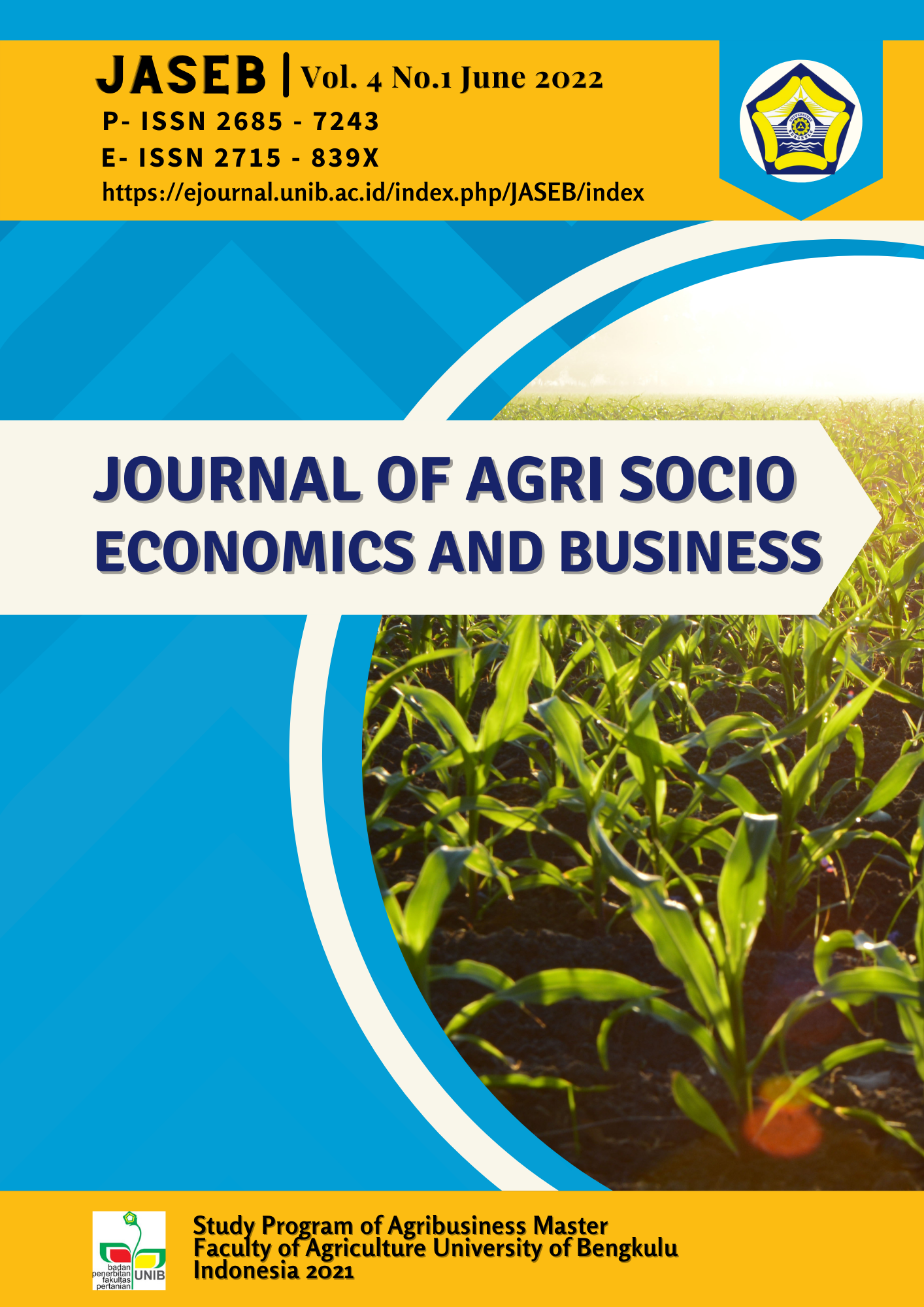Main Article Content
Abstract
Keywords
Article Details
An author who publishes in the Journal of Agri Socio Economics and Business agrees to the following terms:
Author retains the copyright and grants the journal the right of first publication of the work simultaneously licensed under the Creative Commons Attribution-ShareAlike 4.0 License that allows others to share the work with an acknowledgement of the work's authorship and initial publication in this journal
Submission of a manuscript implies that the submitted work has not been published before (except as part of a thesis or report, or abstract); that it is not under consideration for publication elsewhere; that its publication has been approved by all co-authors. If and when the manuscript is accepted for publication, the author(s) still hold the copyright and retain publishing rights without restrictions. For the new invention, authors are suggested to manage its patent before published. The license type is CC-BY-SA 4.0.
Journal Agri Socio-Economics and Business is licensed under a Creative Commons Attribution-ShareAlike 4.0 International License.
References
- Hasmidar. (2016). Manajemen Industri Rumah Tangga Pembuatan Gula Merah (Studi Kasus Pembuatan Gula Merah di Desa Mattampa Kecamatan Ponre Kabupaten Bone). Agriplus, 26(2), 77-86. Retrieved from http://ojs.uho.ac.id.
- Hayami, Y. (1987). Agricultural Marketing and Processing in Upland Java: A Perspective From A Sunda Village. CGPRT. Bogor.
- Luhukai, Johanna Martha. (2011). Profil Pengrajin dan Kontribusi Dari Usaha Rumah Tangga Pengolahan Gula Aren (Studi Kasus Pada Usaha Rumah Tangga Gula Aren di Desa Tuhana Kecamatan Saparua Kabupaten Maluku Tengah). Jurnal Ilmiah Agribisnis dan Perikanan, 4(1), 74–81. Retrieved from http://ejournal.stipwunaraha.ac.id.
- Nazir, Moh. (2014). Metodologi Penelitian. Ghalia Indonesia. Jakarta.
- Salvatore, D. (2002). Managerial Economics dalam Perekonomian Global. Erlangga. Jakarta.
- Soekartawi. (2006). Analisis Usaha Tani. UI Press. Jakarta.
- Widyantara, Wayan. (2019). Risiko dan Faktor Faktor Yang Mempengaruhi Produksi Gula Aren Cetak di Desa Belimbing, Kabupaten Tabanan. Jurnal Manajemen Agribisnis, 7(1), 71-75. Retrieved from http://ojs.unud.ac.id.
References
Hasmidar. (2016). Manajemen Industri Rumah Tangga Pembuatan Gula Merah (Studi Kasus Pembuatan Gula Merah di Desa Mattampa Kecamatan Ponre Kabupaten Bone). Agriplus, 26(2), 77-86. Retrieved from http://ojs.uho.ac.id.
Hayami, Y. (1987). Agricultural Marketing and Processing in Upland Java: A Perspective From A Sunda Village. CGPRT. Bogor.
Luhukai, Johanna Martha. (2011). Profil Pengrajin dan Kontribusi Dari Usaha Rumah Tangga Pengolahan Gula Aren (Studi Kasus Pada Usaha Rumah Tangga Gula Aren di Desa Tuhana Kecamatan Saparua Kabupaten Maluku Tengah). Jurnal Ilmiah Agribisnis dan Perikanan, 4(1), 74–81. Retrieved from http://ejournal.stipwunaraha.ac.id.
Nazir, Moh. (2014). Metodologi Penelitian. Ghalia Indonesia. Jakarta.
Salvatore, D. (2002). Managerial Economics dalam Perekonomian Global. Erlangga. Jakarta.
Soekartawi. (2006). Analisis Usaha Tani. UI Press. Jakarta.
Widyantara, Wayan. (2019). Risiko dan Faktor Faktor Yang Mempengaruhi Produksi Gula Aren Cetak di Desa Belimbing, Kabupaten Tabanan. Jurnal Manajemen Agribisnis, 7(1), 71-75. Retrieved from http://ojs.unud.ac.id.
